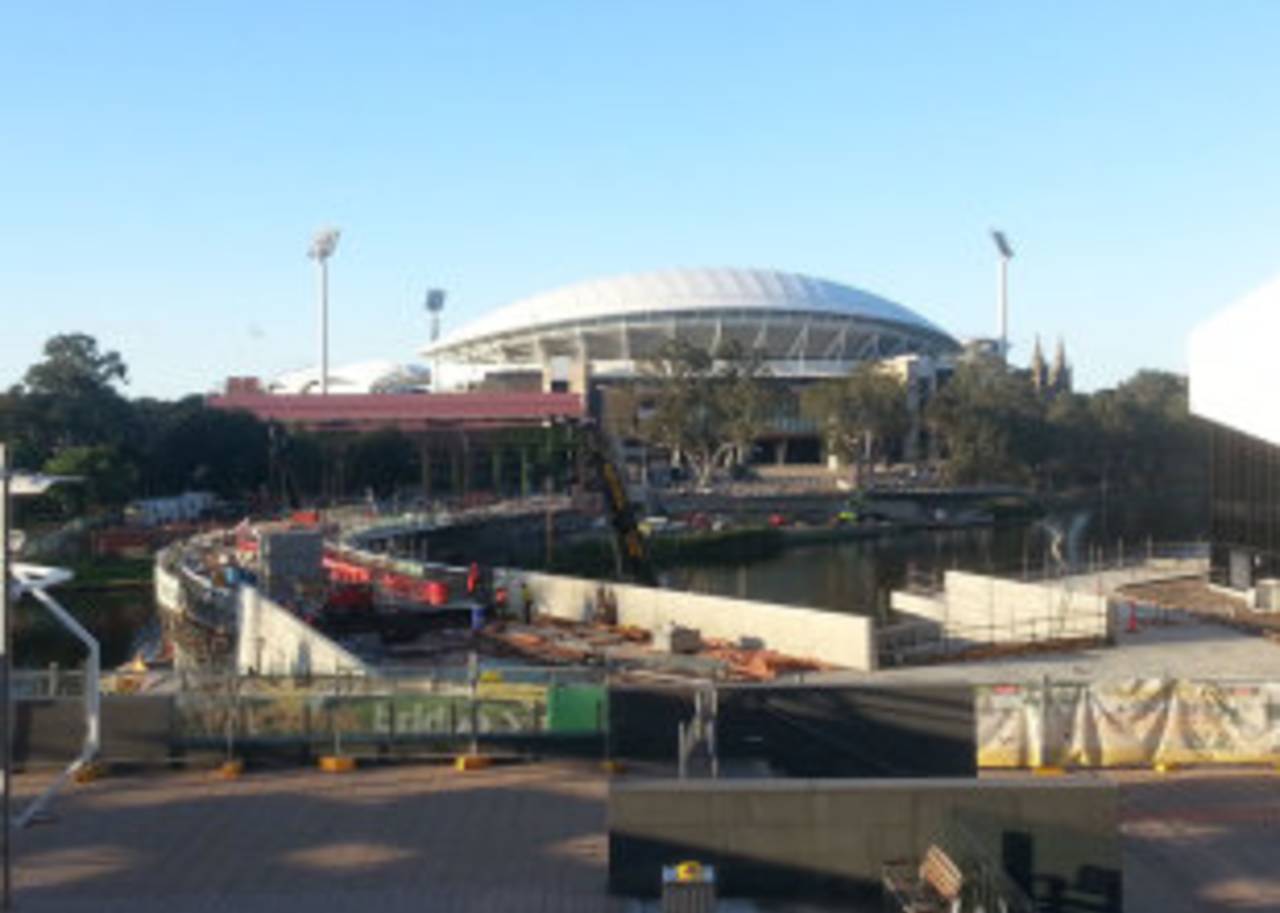From the right seats, at the right angle, St Peter's Cathedral is still visible beyond the Moreton Bay Figs. Once in plain sight to all, that evocative spire can no longer be seen by the vast majority of the thousands who will descend this week upon Adelaide Oval. For so many years a cricket ground, the home of Bradman, Chappell and Hookes has become a stadium.
A redevelopment to cater for football cost more than A$500m (US$456m) in government funding and has almost completely recast Adelaide's previously genteel ambience. Cathedral views have been obscured by a temple at which the denizens of many sports - and lovers of stadium rock shows - will henceforth indulge in their rowdier forms of worship.
As Ricky Ponting put it, "cricket is just a small part of what these entertainment complexes have to offer", and Ashes visitors will duly be greeted by the sight of construction work timed to be complete by the start of the 2014 AFL season. The southern stand is more or less complete and will play host to the annual Test match dinner, while spectators will be catered for in the bottom tier of the eastern structure. Over the River Torrens, the not-quite-complete pedestrian bridge will be opened for partial use on Thursday morning.
The green mounds that once accommodated the majority of Adelaide's crowds have now been reduced to a single strip across the back of the northern end, leaving the venerable scoreboard as a final link to the past. While the source of information on tallies of runs and wickets remains unchanged, it will be the only familiar sensation to greet players in the middle, for even the ground beneath their feet has been vigorously overturned.
Nothing symbolises the marriage of convenience between cricket, football and state government desires for a vibrant all-year precinct on the banks of the River Torrens quite like the arrival of drop-in pitches, an AFL stipulation that overruled years of the two games co-existing at the ground. Straw-coloured and set to dry further before the match begins on Thursday morning, it is a variable that not even the South Australian Cricket Association (SACA) custodians can be entirely sure of.
"It'll be very interesting to see how the pitch deteriorates over the five days,"
Keith Bradshaw, the SACA chief executive, told ESPNcricinfo. "The first two matches it probably hasn't deteriorated quite to the level it has in the past. The second game it did break up a little more than the first. I think [curator] Damian Hough is becoming more familiar now with what he's dealing with. I'd expect to see a traditional Adelaide pitch for this Test match.
"There's been a huge effort made to ensure that we maintained the character of the way the game's played and has always been played at Adelaide Oval, and in terms of the surface that we're playing on we had a few issues when it was re-laid but we've overcome that now. You can have the best facilities and stands and hospitality in the world, but if the surface isn't world-class as well, then the quality of the product is compromised, so that's a very important part of what we've done."
Bradshaw knows a thing or two about marrying past, present and future, having been a popular and visionary overseer of Lord's during his time as chief executive of the MCC. He arrived at the SACA after the decision to redevelop it for wider use had been reached, but has watched approvingly as the stands have risen up in a manner he thinks has retained as much character as possible.
"Part of the beauty of Adelaide Oval is the design has kept the ambience of what it meant to come here to watch cricket," he said. "Now it is catered for football as well, but the fact you have that northern mound, the historic scoreboard, the Moreton Bay figs, the Cathedral in the background and the stands themselves as individual stands, that adds to the character of the ground.
"The facilities are second to none in the world I believe. There is an aura about what's being implemented, and we need to recognise too that no ground can stay still. It will really form quite a cathedral feeling, while the structures are a lot larger there is still a degree of intimacy, which I think is really important."
Irrespective of the aura created by the construction of the new stands and the uncertainty brought by the early days of the drop-in pitch, it is ultimately the cricketers themselves who will build Adelaide's new reputation. The manner of their play will have an impact, but so too the plain-spoken words they will utter about the way the stadium has been put together.
George Bailey has made plenty of runs in Adelaide for Tasmania down the years, and he spoke enthusiastically of his first experience training in the middle of a ground now ringed with stands where once it had been garlanded with mounds, terraces and marquees. But he had one wry objection. "Those red seats behind the bowler's arm," Bailey quipped. "Whoever's come up with that is a genius. I'm sure it'll be good for the Adelaide Crows…"
Daniel Brettig is an assistant editor at ESPNcricinfo. He tweets here
